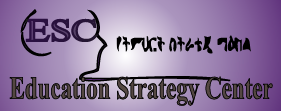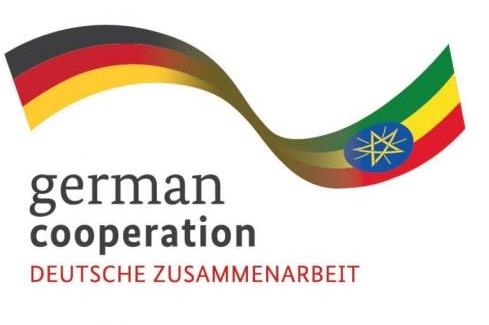Addis Ababa Tegbareid TVET College
July 25-27, 2018
9:00 am - 5:00 pm
Instructors: Erika Mias, Yonas Demissew, Mesfin Diro, Dagim Yoseph
Helpers: Habtamu Kebede, Emamu Abdela
General Information
Library Carpentry is made by librarians, for librarians to help you:
- automate repetitive, boring, error-prone tasks
- create, maintain and analyse sustainable and reusable data
- work effectively with IT and systems colleagues
- better understand the use of software in research
- and much more...
Library Carpentry introduces you to the fundamentals of computing and provides you with a platform for further self-directed learning. For more information on what we teach and why, please see our paper "Library Carpentry: software skills training for library professionals".
Who: The course is for librarians, archivists, and other information workers. You don't need to have any previous knowledge of the tools that will be presented at the workshop.
Where: Mexico Adebabay, Lideta Sub-City. Get directions with OpenStreetMap or Google Maps.
When: July 25-27, 2018. Add to your Google Calendar.
Requirements: Participants must bring a laptop with a Mac, Linux, or Windows operating system (not a tablet, Chromebook, etc.) that they have administrative privileges on. They should have a few specific software packages installed (listed below). They are also required to abide by Library Carpentry's Code of Conduct.
Accessibility: We are committed to making this workshop accessible to everybody. The workshop organisers have checked that:
- The room is wheelchair / scooter accessible.
- Accessible restrooms are available.
Materials will be provided in advance of the workshop and large-print handouts are available if needed by notifying the organizers in advance. If we can help making learning easier for you (e.g. sign-language interpreters, lactation facilities) please get in touch (using contact details below) and we will attempt to provide them.
Contact: Please email dagim.yoseph@aau.edu.et , mesfin.diro@aau.edu.et or yoyoman2200@gmail.com for more information.
Schedule
Surveys
Ask your instructor about pre- and post-workshop Survey details.
Day 1
| 09:00 | Data Intro for Librarians |
| 10:30 | Coffee |
| 11:00 | Data Intro ... |
| 12:30 | Lunch break |
| 13:30 | Shell Lessons for Libraries |
| 14:30 | Coffee |
| 15:00 | Shell Lessons ... |
| 16:00 | Wrap-up |
Day 2
| 09:00 | Data Organization in Spreadsheets |
| 10:30 | Coffee |
| 11:00 | Spreadsheets(Continued) |
| 12:00 | Lunch break |
| 13:00 | Data Cleaning in OpenRefine |
| 14:30 | Coffee |
| 15:00 | OpenRefine(Continued) |
| 16:00 | Wrap-up |
Day 3
| 09:00 | SQL for Libraries |
| 10:30 | Coffee |
| 09:00 | SQL ... |
| 12:00 | Lunch break |
| 13:00 | Wrap-up |
| 13:30 | END |
We will use this collaborative document for chatting, taking notes, and sharing URLs and bits of code.
Syllabus
Data Intro
- Intro to data
- Jargon busting
- Keyboard shortcuts
- Plain text formats
- Naming files
- Regular expressions
- Reference...
The Unix Shell
- Files and directories
- History and tab completion
- Counting and sorting contents in files
- Pipes and redirection
- Mining or searching in files
- Reference...
Data Organisation in Spreadsheets
- Formatting data tables in Spreadsheets
- Formatting problems
- Dates as data
- Quality control
- Exporting data
- Reference...
Open Refine
- Introduction to OpenRefine
- Importing data
- Basic functions
- Advanced Functions
- Reference...
SQL Intro
- What is SQL?
- Intro to SQLite Manager
- Importing a database
- Reading and sorting data
- Filtering with
where - Combining values using aggregation
- Combining information from multiple tables using
join - Reference...
Software Setup
To participate in a Library Carpentry workshop, you will need access to the software described below. In addition, you will need an up-to-date web browser.
We maintain a list of common issues that occur during installation as a reference for instructors that may be useful on the Configuration Problems and Solutions wiki page.
A spreadsheet program
For this workshop you will need a spreadsheet program. Many people already have Microsoft Excel installed, and if you do, you're set! If you need a spreadsheet program, there are a few other options, like OpenOffice and LibreOffice. Install instructions for LibreOffice, which is free and open source, are here.
The Bash Shell
Bash is a commonly-used shell that gives you the power to do simple tasks more quickly.
Windows
Video Tutorial- Download the Git for Windows installer.
- Run the installer and follow the steps bellow:
- Click on "Next".
- Click on "Next".
- Keep "Use Git from the Windows Command Prompt" selected and click on "Next". If you forgot to do this programs that you need for the workshop will not work properly. If this happens rerun the installer and select the appropriate option.
- Click on "Next".
- Keep "Checkout Windows-style, commit Unix-style line endings" selected and click on "Next".
- Keep "Use Windows' default console window" selected and click on "Next".
- Click on "Install".
- Click on "Finish".
-
If your "HOME" environment variable is not set (or you don't know what this is):
- Open command prompt (Open Start Menu then type
cmdand press [Enter]) -
Type the following line into the command prompt window exactly as shown:
setx HOME "%USERPROFILE%" - Press [Enter], you should see
SUCCESS: Specified value was saved. - Quit command prompt by typing
exitthen pressing [Enter]
- Open command prompt (Open Start Menu then type
This will provide you with both Git and Bash in the Git Bash program.
macOS
The default shell in all versions of macOS is Bash, so no
need to install anything. You access Bash from the Terminal
(found in
/Applications/Utilities).
See the Git installation video tutorial
for an example on how to open the Terminal.
You may want to keep
Terminal in your dock for this workshop.
Linux
The default shell is usually Bash, but if your
machine is set up differently you can run it by opening a
terminal and typing bash. There is no need to
install anything.
OpenRefine
OpenRefine (previously Google Refine) is a tool for data cleaning that runs through a web browser, and any browser - Safari, Firefox, Chrome, Explorer - should work fine. You will need to download OpenRefine and install it, and when you open it, it will run through the browser, but you don't need an internet connection, and the data will all be stored on your computer.
Windows
- Download OpenRefine Windows kit installer.
- To use it, unzip, and double-click on openrefine.exe (if you're having issues with openrefine.exe try refine.bat instead)
- OpenRefine will then open in your web browser.
- If it doesn't open automatically, open a web broswer after you've started the program and go to the URL http://localhost:3333 and you should see OpenRefine.
Mac OS X
- Download OpenRefine Mac kit installer.
- Open the downloaded .dmg file
- Drag the icon in to the Applications folder
- Double click on the icon and Google Refine will then open in your web browser.
- If it doesn't open automatically, open a web broswer after you've started the program and go to the URL http://localhost:3333 and you should see OpenRefine.
Linux
- Download OpenRefine Linux kit installer.
- To use it, extract, and type ./refine
- OpenRefine will then open in your web browser.
- If it doesn't open automatically, open a web broswer after you've started the program and go to the URL http://localhost:3333 and you should see OpenRefine.
Text Editor
When you're writing code, it's nice to have a text editor that is
optimized for writing code, with features like automatic
color-coding of key words. The default text editor on macOS and
Linux is usually set to Vim, which is not famous for being
intuitive. If you accidentally find yourself stuck in it, try
typing the escape key, followed by :q! (colon, lower-case 'q',
exclamation mark), then hitting Return to return to the shell.
Windows
Video Tutorialnano is a basic editor and the default that instructors use in the workshop. To install it, download the Library Carpentry Windows installer and double click on the file to run it. This installer requires an active internet connection.
Others editors that you can use are Notepad++ or Sublime Text. Be aware that you must add its installation directory to your system path. Please ask your instructor to help you do this.
macOS
nano is a basic editor and the default that instructors use in the workshop. See the Git installation video tutorial for an example on how to open nano. It should be pre-installed.
Others editors that you can use are Text Wrangler or Sublime Text.
Linux
nano is a basic editor and the default that instructors use in the workshop. It should be pre-installed.
Others editors that you can use are Gedit, Kate or Sublime Text.
SQLite
SQL is a specialized programming language used with databases. We use a simple database manager called SQLite in our lessons.
Windows
The Library Carpentry Windows Installer installs SQLite for Windows. If you used the installer to configure nano, you don't need to run it again.
macOS
SQLite comes pre-installed on macOS.
Linux
SQLite comes pre-installed on Linux.
If you installed Anaconda, it also has a copy of SQLite
without support to readline.
Instructors will provide a workaround for it if needed.

